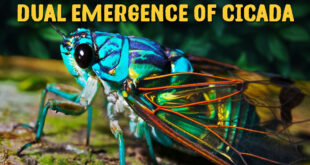
Compulsory use of nuclear power all over the world resulting in the unwanted and dangerous nuclear waste and estimated 34 million cubic metres of global nuclear waste will cost over $100 billion to manage and dispose.
However, this waste can be put to useful applications in the form of nuclear diamond batteries to meet the growing dependence of mankind on the use of batteries in daily life from electronic equipment’s to electric vehicles.
- A lot of this waste is graphite that is one of the higher risk radioactive waste and one of the most expensive and problematic waste to store.
- The California-based start-up Nano Diamond Battery has unveiled a battery that uses nuclear waste and lasts up to 28,000 years.
- The power of the nano-diamond battery comes from radioactive isotopes used in nuclear reactors.
- Radioactive diamond batteries are thought to be a possible cure for growing piles of nuclear waste.
Technological basics
A typical betavoltaic cell consists of thin, foil-like layers of radioactive material sandwiched between semiconductors.
- As the nuclear material naturally decays, it emits high- energy electrons or positrons called beta particles that knock electrons loose in the semiconductor material to create an electric current.
- In this sense, a nuclear battery is similar to a solar panel, except that its semiconductors soak up beta particles rather than photons.
- Radioactive isotope called carbon-14 best known for its role in radiocarbon dating can provide a boost to nuclear batteries because it can function both as a radioactive source and a semiconductor.
- It also has a half-life of 5,700 years, which means a carbon-14 nuclear battery could, in principle, power an electronic device for longer than humans have had written language.
- Its radioactive core is protected by multiple layers of synthetic diamonds, one of the hardest materials to damage or break. The energy is absorbed in the diamond through inelastic scattering, which is used to generate electricity.
- The company has made a self-charging battery by trapping carbon-14 (C14) nuclear waste in artificial diamond-case.
- The battery works by generating electricity on its own from a shower of electrons as result of radioactive decay scattered and deposited in the artificial diamond-case
Bottlenecks of technology
With the fear being associated with harmful effects of nuclear waste, people don’t relish the idea of having something radioactive anywhere near them but the health risk from nuclear diamond batteries are comparable to the health risk of exit signs, which use a radioactive material called tritium to achieve their signature red glow.
- Unlike gamma rays or other more dangerous types of radiation, beta particles as a source of current in the batteries can be stopped in their tracks by just a few millimeters of shielding.
- Usually just the wall of the battery is sufficient to stop any emissions and the inside is hardly radioactive at all, and that makes them very safe for people.
- Further, when the nuclear battery runs out of power, it decays to a stable state, which means no leftover nuclear waste
 Chinmaya IAS Academy – Current Affairs Chinmaya IAS Academy – Current Affairs
Chinmaya IAS Academy – Current Affairs Chinmaya IAS Academy – Current Affairs



